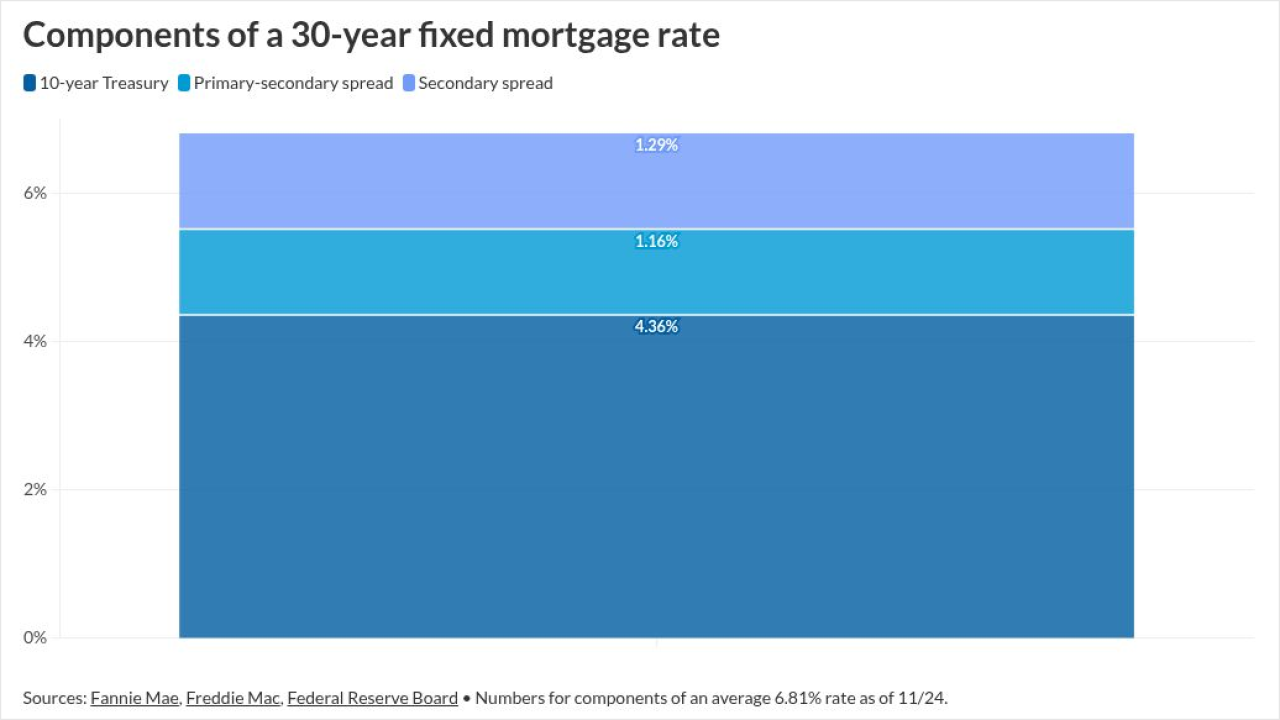Pending for nearly three years, the Corporate Transparency Act (CTA) becomes effective at the start of 2024, and market participants planning to issue securitizations next year may want to form the necessary entities before year-end, to give more time to become compliant. Start soon, however, because determining whether an entity faces the CTA's reporting requirements may end up being a complicated task.
The CTA was enacted in Jan. 1, 2021 and will go into effect exactly three years later. Companies subject to CTA requirements created before the effective date will have until Jan. 1, 2025 to comply, but those created or registered after the effective date will have only 30 days. The Financial Crimes Enforcement Network (FinCEN) recently proposed an amendment to extend that deadline to 90 days, according to law firm Dechert in a Nov. 2 report, but that is still significantly less than the year given to existing reporting companies.
"One strategy that may make sense: go ahead and form in 2023 the entities that you anticipate needing in the near future, to enjoy a one-year initial reporting window," Dechert says.
The CTA was enacted as part of the Anti-Money Laundering Act of 2020 and defines who must file a report and the information to be provided. Dechert says that CTA reporting requirements could be especially challenging for securitizations, because there is no limit to the number of beneficial owners that a reporting company must disclose. Securitizations' use of special purpose vehicles can complicate that task and in some cases make it practically impossible, and the CTA does not put a limit on the number of ownership or controlling entities that must be reported.
The first step is to determine whether an entity is a reporting company under CTA's definition, which is wide-ranging and encompasses various forms of business organizations, Dechert says. Then securitization-market participants must determine whether their entities can take advantage of one of 23 exemptions.
"The CTA has broad application, so everybody needs to worry about it," said Devin Swaney, partner in Dechert's global finance practice, in an interview. "People need to get under the hood and analyze the structure of any given deal to see if the CTA is going to apply."
The expectation is that most plain vanilla securitizations will be exempt from CTA reporting requirements, as long as the issuer's equity is not sold to third parties, said David Matthews, partner at Katten Muchin Rosenman. If the issuer is a CTA reporting company, the securitization sponsor must report beneficial ownership information for all natural persons who own at least 25% of the equity, and who exert substantial control over the reporting company.
Matthews said that a significant consequence of selling part of securitization's equity is potentially losing the subsidiary exemption from reporting, a key exemption. That exemption applies to securitization entities if all their equity is owned, directly or indirectly, by other companies that are already exempted from CTA requirements. Those entities can include banks, SEC reporting companies and large operating companies.
However, to avail itself of that exemption after selling equity to third parties, a securitization entity must determine that every purchaser of the equity is also exempt from reporting.
That could prove to be a major challenge for securitizations sold anonymously through the Depository Trust Company (DTC).
"When you need to find out who owns your securities that are held through the DTC, you're going to run into a brick wall pretty quickly," Matthews said.
Dechert notes that corporate CLOs, broadly syndicated CLOs, private credit CLOs and similar structures should not be subject to CTA reporting, either by not qualifying as a reporting company in the case of offshore vehicles, or qualifying for the pool-investments-vehicles exemption if they are onshore. In some instances, entities such as CLO co-issuers that are wholly owned by offshore CLO issuers will likely have to comply with CTA beneficial-owner reporting requirements.
"We think the best situated persons to be listed under each of those positions is likely the board of directors of the CLO issuer that wholly owns and typically manages the CLO co-issuer," Dechert says.
For commercial real estate (CRE) CLOs, Dechert says, onshore issuers and co-issuers of those transactions will be subject to the full CTA reporting requirements. Dechert adds that the application of the CTA to asset-backed securities (ABS) is less clear than for CLOs and CRE CLOs, "and asset-backed issuers should generally consider the provisions outlined in the CTA to be applicable to them."





